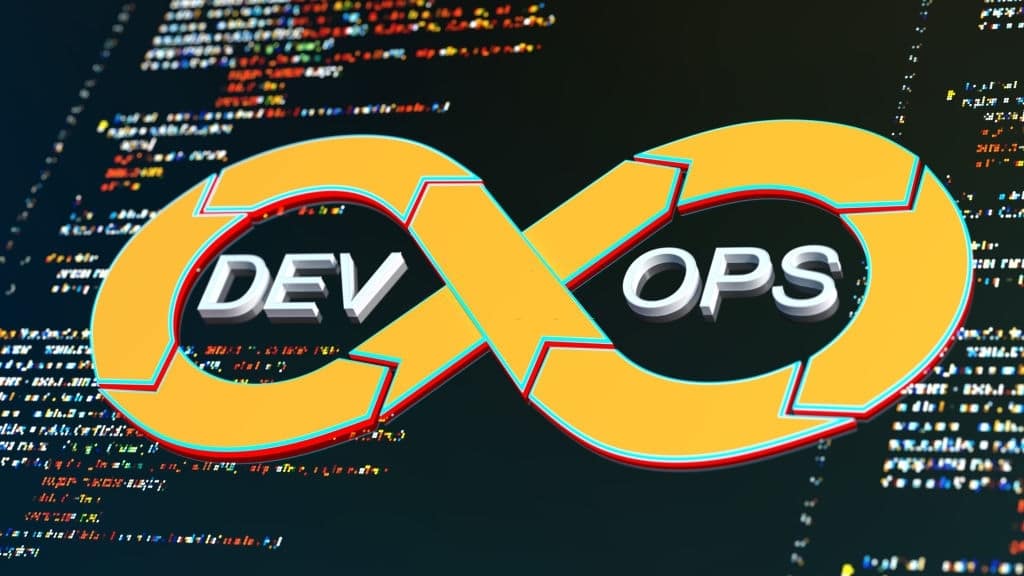DevOps is a buzzword that has infiltrated the IT world in recent years. It refers to an agile development methodology that focuses on rapid deployment and testing, continuous integration, and code delivery from one environment to another.
The goal of DevOps is to increase collaboration between software developers and other members of a business’ technology team so they can quickly respond to change requests with new features or bug fixes.

The problem for many businesses is how best to implement DevOps within their company and get rid of old-school processes that were created when the software was released every two or three years.
This blog post will highlight three best practices for building a successful DevOps team including having a clear vision, hiring professionals with experience in managing projects and working on container registries such as the one by JFrog, among others.
#1 Have a Clear Vision
The first step in any DevOps implementation is to have a clear vision. What are the goals of the team? What do you want to achieve with DevOps?
Be realistic when setting these goals and don’t try to change everything overnight. The goal should be to improve the process, not just implement DevOps for the sake of implementing it.
It’s equally important to steer clear of common pitfalls that could undermine the success of your DevOps efforts. Issues like poor communication, lack of proper training, or neglecting team collaboration can quickly slow down progress. Take some time to explore this article or similar blogs that dive into how to spot and address these challenges effectively.
Once you have defined a clear vision and are equipped with ways to avoid potential hurdles, document it and share it with all members of the team. This will help ensure that everyone is on the same page and working towards the same goal.
This vision should be revisited on a regular basis. It’s important to evaluate things and see how they’re going, not just set them in stone for years at a time.
Once the team has this clear vision of where you want to go with DevOps it will help guide their decisions as development moves forward. As new technologies emerge and problems arise, this vision should be used as a guide.
#2 Hire the Right People
Most DevOps teams should be made up of at least three engineers. The first engineer would play a lead role on the team and act as project manager, while one or two others help with development and testing tasks.
For this post, we’ll discuss hiring specifically for the project management aspect of things but there are other positions that are integral to a successful DevOps team.
When hiring for a project manager, look for someone with the following skills:
- Excellent communication skills – The project manager is responsible for communicating with both developers and business stakeholders so they need to be able to effectively relay information in both directions.
- Experience working in an Agile environment – The project manager is responsible for documenting the team’s goals, timelines, and priorities. They will need to be familiar with typical Agile practices as well.
- Experience working with Scrum or Kanban methodologies is a plus – This doesn’t necessarily have to be recent experience but someone who has worked in an agile environment in the past will have a better idea of what is required for a successful DevOps implementation.
- Experience with automation tools – The project manager will need to be familiar with common DevOps tools and how to use them.
When hiring developers, look for someone who has experience in the following areas:
- Experience working with code versioning tools, such as Git or SVN – This is a must-have for anyone working on a DevOps team.
- Experience with scripting languages, such as Python or Ruby – Again, this is something that is commonly used in DevOps and will help the developer be more productive when working on scripts.
- Experience with container registries – This is becoming a more common requirement for DevOps teams.JFrog, Kubernetes, and Docker Swarm are all popular options so it’s important to find developers who have experience working with them.
- Experience with Linux environments – Many of today’s modern DevOps tools require Linux to work. If a developer doesn’t have this experience they may end up spending valuable time learning how to use them while the rest of their team is moving ahead with development.
- Experience working in an Agile environment – The experienced developers will already be familiar with agile practices and won’t need to be taught everything from scratch.
- Experience with automation tools – As mentioned before, experience with automation tools is a big plus.
When interviewing candidates for these positions, ask them about their experience and what they’re currently working on. This will give you a good idea of whether or not they have the skills required for a successful DevOps team.
#3 Implement a Continuous Integration/Continuous Delivery Pipeline
Once you have the right team in place, the next step is to implement a continuous integration and delivery pipeline. This will allow your team to rapidly push changes out to production while still maintaining quality.
There are many different tools that can be used for this but we’ll focus on Jenkins here. Jenkins is a popular continuous integration and delivery server that can be configured to run various tasks when code changes are pushed out. The most common use case for Jenkins involves running automated unit tests on the new code, compiling it into an executable package (such as a .exe or .jar), then pushing it up onto either a test or production environment using another tool like Puppet or Chef.
There are many different plugins for Jenkins that can be used to speed up the development process. For example, the Git plugin allows developers to easily pull code from a Git repository and push changes back without having to leave the Jenkins interface. There are also plugins available for compiling Java code, running automated tests, and deploying code to a container registry on JFrog or Docker Hub.
Keep in mind that you may need more than one Jenkins instance if your team is large enough and has multiple codebases being worked on simultaneously. This can easily be accomplished by using an external tool like Consul, which allows for easy configuration of services across many servers (in a clustered environment).
Once you have Jenkins up and running, it’s important to make sure that all of your developers are familiar with how to use it. There are many online tutorials available that can walk them through the basics. You may also want to consider holding a training session or two so that everyone is on the same page.
The final step is to configure your CI/CD pipeline. To do this you’ll need to set up a build script that will run when code changes are pushed out. The easiest way to get started with Jenkins pipelines is by using JFrog, which has many online tutorials available for getting up and running quickly.
Conclusion
A successful DevOps team requires the right mix of skills and experience. By following the tips in this article, you can make sure that you’re hiring the right people for the job.
Once you have the team in place, it’s important to implement a continuous integration and delivery pipeline so that your developers can rapidly push changes out to production while still maintaining quality. Jenkins is a popular tool that can be used for this, and there are many different plugins available to help speed up the development process.
Make sure that all of your developers are familiar with how to use Jenkins and configure your CI/CD pipeline so that you can start taking advantage of its power.
Happy coding!



